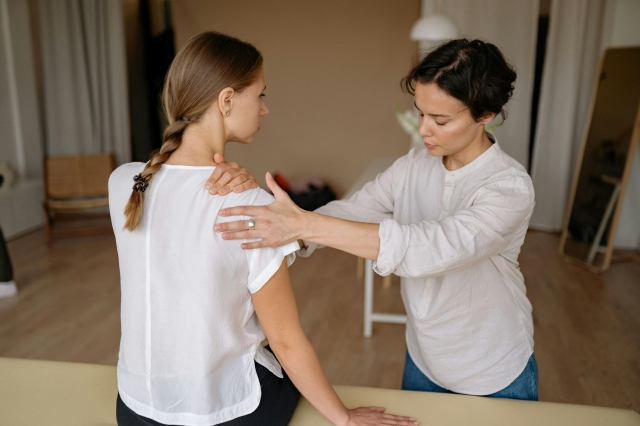Want to build muscle strength, burn calories, decrease abdominal fat, or strengthen bones? Try weight training at the gym. While weight training is good for your body, lifting heavy weights can come with an unwelcome side effect. It can lead to injuries.
Repetitively lifting heavy weights can cause a tear in the rotator cuff, the group of muscles and tendons that stabilize your shoulder. Recently, Orioles closer Félix Bautista sustained a rotator cuff tear and had surgery this month.
Surgery isn't always the answer, however. Most mild to moderate tears can heal naturally. Want to know how? Dive in, for we'll share a few non-surgical ways that can help you recover fully and return to training smarter, without risking long-term damage.
#1 Try Temperature Therapy
When an injury first happens, your body's natural response is to send blood to the area. This is why the injured site feels swollen and painful. This initial inflammation is a major source of discomfort.
Temperature therapy can help manage pain and swelling. The expert consensus points to using ice for acute or new injuries. Applying an ice pack to your shoulder can help minimize swelling and reduce pain. The cold helps by constricting blood vessels, so there is less blood flow to the area.
For the best results, apply the ice pack for 20 minutes at a time. Try repeating this 3 to 4 times a day. Before applying it to your shoulders, wrap the ice pack in a clean towel or cloth to prevent frostbite.
After about 72 hours, when the swelling has gone down, you can switch to heat therapy. Heat is great for soothing chronic pain and muscle stiffness because it increases blood flow to the area by opening up small blood vessels.
Unlike ice, heat works by causing small blood vessels to open up, which increases blood flow to the area. This helps relax stiff joints and muscles. Just like with ice, limit heat applications to about 20 minutes at a time.
#2 Do Gentle Stretches and Strengthening Exercises
A rotator cuff tear doesn't just weaken your shoulder. It can also tighten surrounding muscles and disrupt the delicate balance of the shoulder joint. Gentle, controlled movements help build your shoulder's strength and regain mobility.
Begin with pendulum swings. This simple exercise uses gravity to gently mobilize your shoulder joint. Lean forward with your good arm on a table for support and let your injured arm hang down. Gently sway your body to move the arm in small circles or forward and backward, allowing the momentum to create the movement.
Shoulder blade squeezes are another simple and effective exercise. Sit down and gently pull your shoulder blades back and down as if you were trying to hold a pencil between them. Hold for a few seconds, then relax. This simple exercise helps engage and strengthen the muscles that stabilize your shoulder.
For building strength, resistance bands are great. They provide variable resistance that is easier on healing tissues than weights.
Start with external and internal rotation exercises. Holding the band with your injured arm, keep your elbow at your side and rotate your arm away from your body. To perform the internal rotation exercise, rotate your arm in the opposite direction.
#3 Explore Regenerative Therapy
If traditional rehab isn't giving you the relief you need, regenerative therapy might be worth exploring. These treatments aim to boost your body's natural healing process.
One popular option is stem cell therapy. It's a simple injection procedure that heals the tissue and regenerates it within.
Stem cells are like the repair crew of your body. According to Beyond CellCare, they can stimulate new tissue growth and reduce inflammation when injected into a shoulder joint. They do this by releasing special proteins that signal your native cells to begin the healing process. This can reduce pain and improve movement.
Just this year, Kim Kardashian tried stem cell therapy in Mexico and regained a full range of motion in her shoulder. For the unversed, she tore her shoulder while lifting weights, after which she suffered chronic pain.
Note, though, stem cell treatment for orthopedic pain is not yet accessible in the U.S. So, if you're considering it, you will have to fly to Mexico for the treatment.
Don't worry too much about the cost, though. The procedure is less expensive in Mexico than in other countries. The cost of stem cell therapy in Mexico ranges between $3,000 and $8,000.
Patience is Part of the Process
A rotator cuff tear may have taken you out of the gym, but it does not have to be a permanent setback. It's important to approach recovery with a holistic and proactive mindset.
Resist the urge to grab the heavy dumbbells too soon. Pushing through pain only delays your progress. Instead, stay consistent with these habits and you can heal naturally and get back to lifting stronger than ever.






